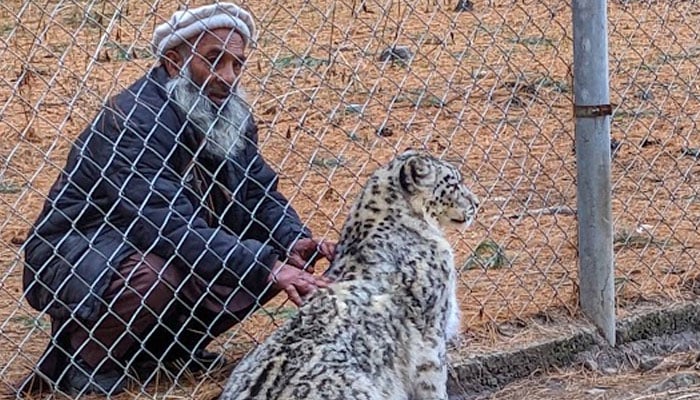
In the remote mountains of Gilgit-Baltistan, an innovative use of artificial intelligence (AI) could offer new hope for the endangered snow leopard—and for the villagers who share their territory, BBC reported.
Snow leopards, elusive by nature and incapable of growling, face serious threats. Lovely, a snow leopard rescued as a cub 12 years ago, purrs softly when approached.
She cannot be released into the wild, says her caretaker, Tehzeeb Hussain: “If we release her, she would just go attack a farmer’s sheep and get killed.”
Despite protective laws, the World Wide Fund for Nature (WWF) reports that 221 to 450 snow leopards are killed each year, over half in retaliation for livestock losses.
Their global population has dropped 20% in two decades, with only 4,000 to 6,000 left in the wild, about 300 in Pakistan.
To change that, WWF and Pakistan’s Lahore University of Management Sciences (LUMS) have installed AI-enabled cameras in high mountain areas.
These solar-powered devices detect snow leopards and send villagers text alerts to move livestock. Conservationist Asif Iqbal explains how the cameras can distinguish between people, animals, and leopards.
“Snow leopard territory,” he says, pointing to fresh tracks. “These are pretty new.”
The system isn’t flawless. Asif demonstrates how he’s sometimes identified as both human and animal—likely due to his thick white fleece—but the cameras have captured clear night images of snow leopards marking their territory.
Installing these cameras involved trial and error. Batteries had to withstand winter cold, and solar panels needed non-reflective paint. Landslides damaged some units. And when there’s no signal, the cameras store data locally.
Community cooperation proved another hurdle. “We noticed some of the wires had been cut,” Asif says. “People had thrown blankets over the cameras.”
Cultural sensitivities also required camera relocation to protect women’s privacy. Some villages have yet to sign privacy agreements, and the WWF is requiring assurances that footage won’t be shared with poachers.
Villagers like Sitara, who lost six sheep in a single snow leopard attack, remain sceptical: “My phone barely gets any service during the day, how can a text help?”
Still, community attitudes are shifting. Khyber elders say more residents now understand the leopard’s ecological value.
By controlling populations of ibex and blue sheep, snow leopards prevent overgrazing, helping sustain grasslands for livestock.
Others remain wary, citing livestock losses and climate shifts pushing farming higher into leopard zones. Legal enforcement has helped—three men were jailed in 2020 for killing a snow leopard.
In September, the WWF will begin testing deterrents like sounds, lights, and scents to protect both animals and livelihoods. For now, tracking these “ghosts of the mountains” continues — with AI as an unlikely ally.



